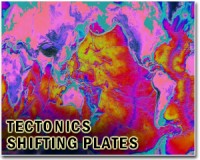| . |  |
. |
Paris (AFP) March 27, 2011 Monster earthquakes like the 9.0-magnitude event that occurred off Japan on March 11 are unlikely to trigger a large quake in distant regions of the world, according to a study published on Sunday. The research -- coincidentally published in the wake of the tsunami-generating killer -- counters a novel theory that an exceptional quake in one continent can unleash a temblor in another. Tom Parsons of the US Geological Survey (USGS) and Aaron Velasco of the University of Texas at El Paso cast their net in 30 years of data. They looked at all earthquakes around the world that were 7.0 magnitude or above and were followed by quakes greater than magnitude 5.0. Their trawl came up with 205 main shocks, and more than 20,000 hypothetical secondary shocks. There was a "significant increase" in seismic activity in adjoining areas of the fault, they found. This confirms beliefs that a big quake places stress on a nearby section of the same fault, which then ruptures, rather like buttons on a shirt that pop off one by one. But beyond this localised knock-on effect -- which typically occurred two or three rupture lengths farther down the same fault -- there was no increase in seismic risk. "The regional hazard of larger earthquakes is increased after a mainshock, but the global hazard is not," concludes the study, which appears in the journal Nature Geoscience. The theory of earthquakes triggered at long distance was sketched in a 2009 paper. It noted in particular a big change in stress in a closely monitored section in California's San Andreas fault after the 9.1 quake that struck west of Sumatra in December 2004, a whopping 8,000 kilometres (5,000 miles) away. Parsons said that, after a very large quake, "the whole planet is an aftershock zone." Pulses of seismic energy show up even in places such as Australia which are not quake-prone regions. This is because surface waves from a quake are transmitted along the globe's thin crust, which effectively channels their energy around the world. But there was no evidence that the pulse brings distant faults closer to rupture, he said in an interview with AFP. The authors of the 2009 paper "didn't actually see a large earthquake occurring" in California after the 2004 Sumatra quake, he noted. Parson said he monitored the March 11 event as it unfolded, but saw nothing to suggest it was badly shaking up another fault beyond its region. A strong 6.8 quake hit Myanmar on March 24, but this was most likely coincidence, he said. "There are clusters of events that happen, then there's periods of quiet, it's just the Earth behaving as it does -- there is variability," he said. "There might also be some causes that we don't understand. But there's nothing that leaps out about this last decade that's unusual." Seismologists were racing to calculate the potential increase in risks to faults south of where the March 11 earthquake happened, for it includes a notorious area underlying Tokyo that caused devastation in 1923 and 1703, he added. "There's certainly a concern. Every time you have a disturbance like this, the odds of other earthquakes are raised for a period of time. It can be decades."
Share This Article With Planet Earth
Related Links Tectonic Science and News
 Drilling into Earth's mantle proposed
Drilling into Earth's mantle proposedLondon (UPI) Mar 24, 2011 International scientists say they are preparing to drill off Costa Rica in an attempt to retrieve the deepest rocks ever extracted from beneath the seabed. The drilling project will initially attempt to reach 1.25 miles under the ocean floor with an ultimate goal of returning even deeper samples from the mantle layer below the Earth's crust, the BBC reported Thursday. Obtaining r ... read more |
|
| The content herein, unless otherwise known to be public domain, are Copyright 1995-2010 - SpaceDaily. AFP and UPI Wire Stories are copyright Agence France-Presse and United Press International. ESA Portal Reports are copyright European Space Agency. All NASA sourced material is public domain. Additional copyrights may apply in whole or part to other bona fide parties. Advertising does not imply endorsement,agreement or approval of any opinions, statements or information provided by SpaceDaily on any Web page published or hosted by SpaceDaily. Privacy Statement |